How Mansudae, the world's largest leader factory, works
Categories: Asia | Culture | Design and Architecture
By Pictolic https://pictolic.com/article/how-mansudae-the-world39s-largest-leader-factory-works.htmlIt is very difficult to name products that North Korea would export. And the point is not even that technology is poorly developed there. Sanctions imposed against the DPRK by almost the entire world remove it from the list of players in the world market. The country has lived in economic isolation for decades, but still produces some things that are in great demand in certain regions of the planet. These are giant monuments to dictators, leaders and simply statesmen, produced under the Mansuda brand.

Mansudae Studio is perhaps the oldest enterprise in the DPRK. It was created in 1959 on the personal instructions of the country's founder, Kim Il Sung. The leader was a great lover of the arts and spared nothing for their development. They didn’t bother with the name for a long time - the studio was named after the district of Pyongyang where it was located. Over the years, Mansudae has created a huge number of monuments, mainly dedicated to political leaders and “fathers of nations.”
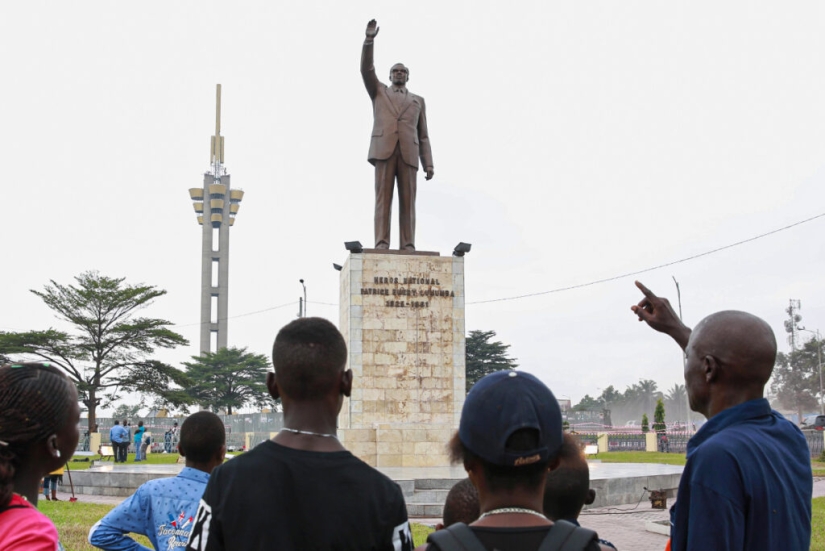
The products of North Korean sculptors were in great demand not only in their homeland. As one might expect, the most underdeveloped states on the planet turned out to be great connoisseurs of grandiose monuments. Mansudae masters were most welcome in African countries. Monumental masterpieces by sculptors from Pyongyang can be found in 15 countries of the Dark Continent.
For a country surrounded on all sides by sanctions and embargoes, the millions of dollars that the studio brought in were completely unnecessary. The export of monuments continued until 2016, until, after another nuclear missile test, the UN introduced another package of sanctions. Among other things, the DPRK was prohibited from selling and erecting monumental art objects abroad.
Hearing the word “studio”, you immediately imagine a spacious, bright room, engulfed in creative chaos. So the Mansudae studio has nothing to do with this. Now this is a huge enterprise with a total area of 120 thousand square meters. It employs 4 thousand employees, divided into 14 departments. Each of them does his own thing: sculpture, painting, engraving, ceramics.
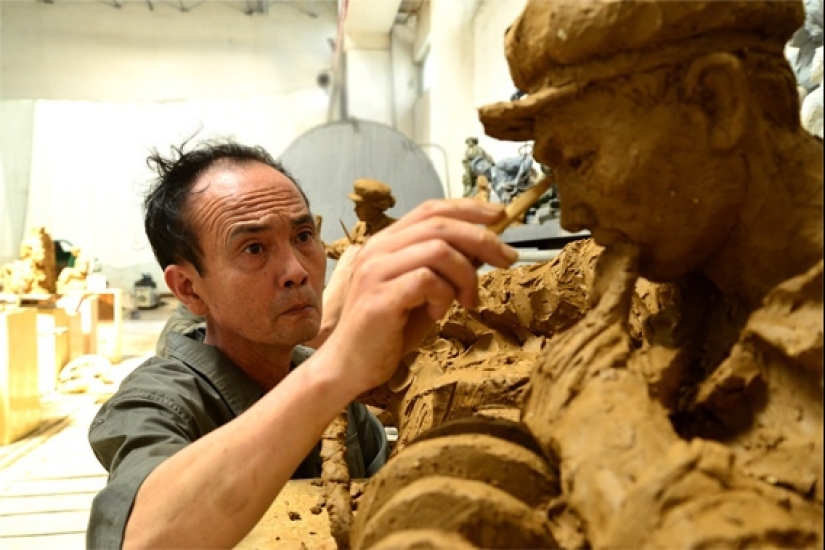
Everyone knows Mansudae as a company that produces bronze monuments. But, as we see, the studio made money in any possible way. And it should be noted that the quality of the products has always been excellent. However, there were also critics, but we will talk about this a little later.
The representative of the studio abroad, Italian Pier-Luigi Cecioni, told in an interview what “Mansudae” looks like. According to him, this is a large complex reminiscent of an American university campus. There is a stadium, a children's room and many other facilities necessary for life. But people don’t live there, they just work.
For the DPRK, the factory for more than 50 years was not only a source of foreign currency. Mansudae Studio is an important tool for creating the country's image. In addition to the figures of ambitious African “kings,” the studio also completed many serious orders. For example, they ordered a copy of the Fountain of Fairy Tales, which once adorned Frankfurt am Main.
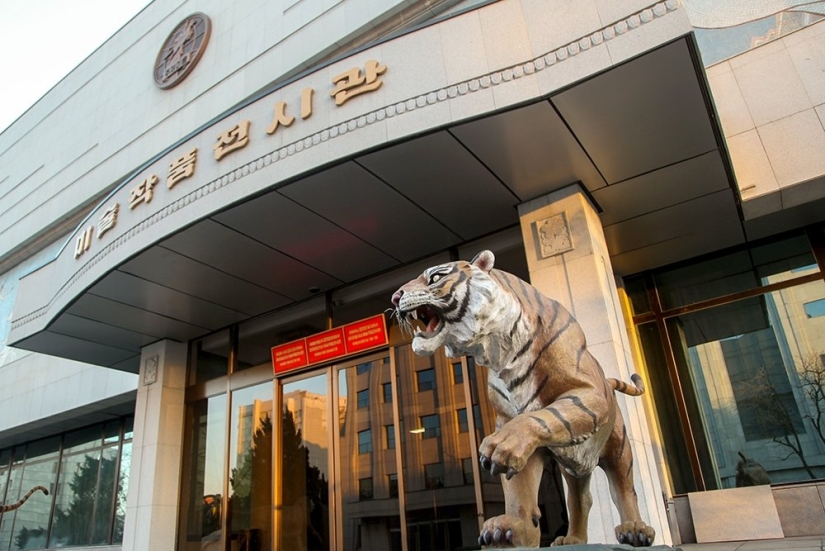
The fountain was created in 1910 and during the Second World War it was melted down for the needs of the military-industrial complex. All that remained were photographs from which North Korean craftsmen completely recreated the masterpiece. Now it can be seen again in its old location, near the Frankfurt Opera.

Specialists from Mansudae created a huge embroidery in the form of a world map for Benetton. It now decorates the company's headquarters. The Koreans also built a unique panorama museum in Cambodia, which cost the country $24 million. Artists from Pyongyang regularly paint huge paintings for various exhibitions taking place in China.
But the biggest fans of Mansudae products were the leaders of African countries. These guys don't have much imagination. They ordered giant figures of their loved ones or historical and mythical characters, again similar in appearance to themselves.
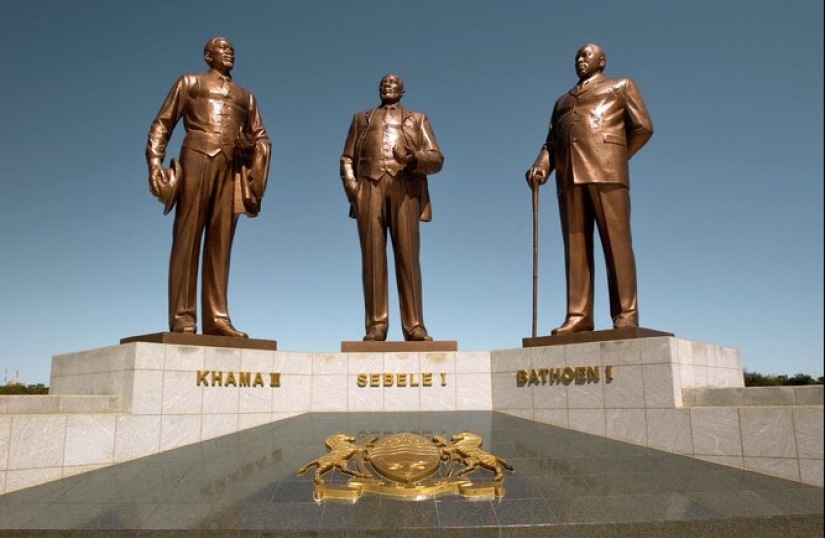
All projects were implemented through secret tenders, so the world knew almost nothing about Pyongyang’s African business. Nevertheless, these semi-legal transactions brought Mansudae more than $260 million in profit during its existence.
This business began in the early 80s, when the DPRK was not yet suffering from sanctions, and China was actively helping its fellow socialist. At that time, the Juche country could still afford to make generous gifts. One of them was the “Our Struggle” monument made for Ethiopia. It was dedicated to the Ethiopian and Cuban fighters who conquered the Ogaden region from neighboring Somalia in the late 70s.
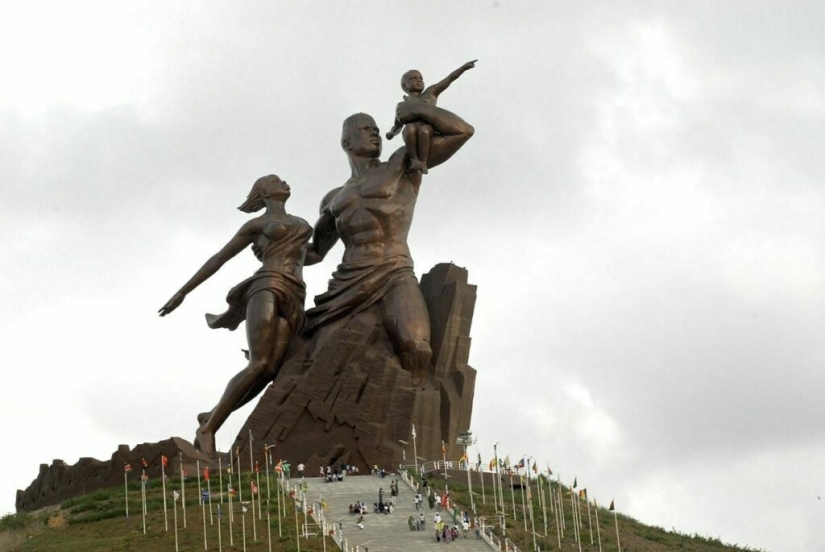
The DPRK's gift did not go unnoticed and soon the guys from Mansudae had more work to do. The poorest countries in Africa seemed to be competing to see who could order the largest monument and pay the most for it. The largest, most expensive and famous creation of sculptors from the DPRK was the “Renaissance of Africa” monument in Dakar, the capital of Senegal.
The grand opening of the monument took place in 2010, on the 50th anniversary of the independence of the African state. It cost Senegal $27 million (1.7 billion rubles). Such waste of funds caused strong indignation among the population in the poorest country in Africa, but what do they mean compared to the splendor of the composition!
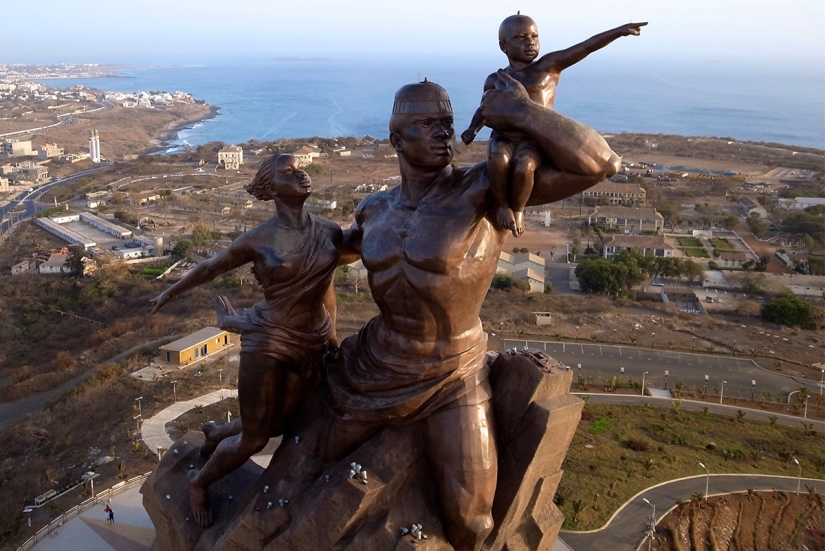
The African Renaissance Monument features the figures of a father, mother and child. It reaches a height of 49 meters, which means it is taller than the Statue of Liberty in New York and the figure of Jesus the Redeemer in Rio de Janeiro. Senegalese President Abdoulaye Wade said the figures represent the exodus of the continent's peoples from obscurantism and darkness to light and prosperity.
Mansudae's products seemed impeccable, but customers had comments. The same leader of Senegal, Abdoulaye Wade, noted that a company from the DPRK gives Asian features to the faces of the figures. He even had to intervene in the work process after the presentation of the layout. At Wada's request, the faces of the family coming out to the light were made more African. Although something Asian in appearance remains.
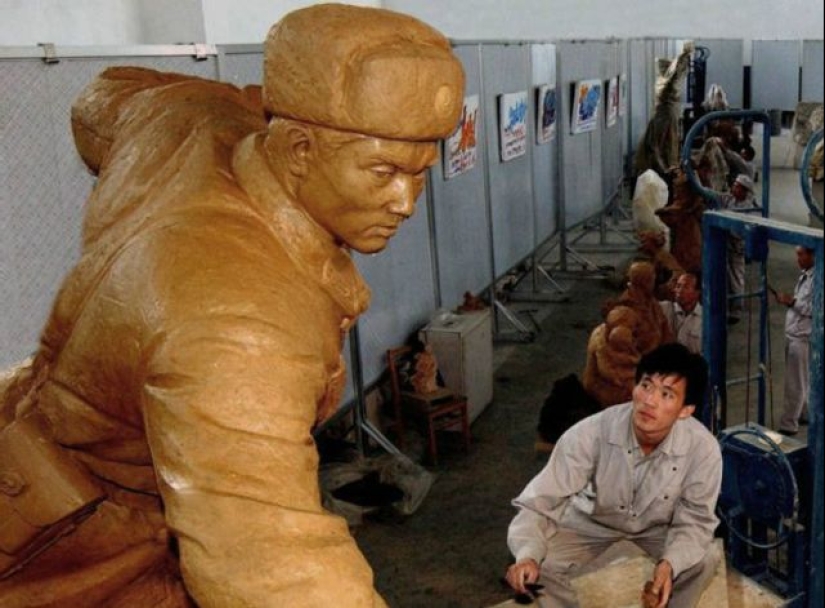
The team from Pyongyang has received similar comments more than once. The thing is that in their homeland, North Korea, the masters have never seen faces other than Asian ones. Moreover, at home they created only figures of their leaders and members of their families. It was not easy for them to adjust.
Mansudae's activities abroad were closely monitored by several intelligence services from different countries and UN representatives. They had some reason to suspect the studio of arms trafficking. The company likely used its offices in Africa and Asia to negotiate forbidden but incredibly profitable deals.
But it was not possible to prove the arms trade. But in Namibia, Mansudae specialists were caught red-handed in the construction of military facilities. The engineers and workers who came to work on the monuments were in fact building fortifications, bunkers and an ammunition factory. It's entirely possible that the money the studio made fueled North Korea's nuclear program.
After the adoption of new sanctions by the UN Security Council in 2016, the purchase of monuments and even just paintings from Mansudae was prohibited. Even the deals already concluded by the company were frozen. This was supposed to stop the flow of foreign currency into the DPRK treasury.
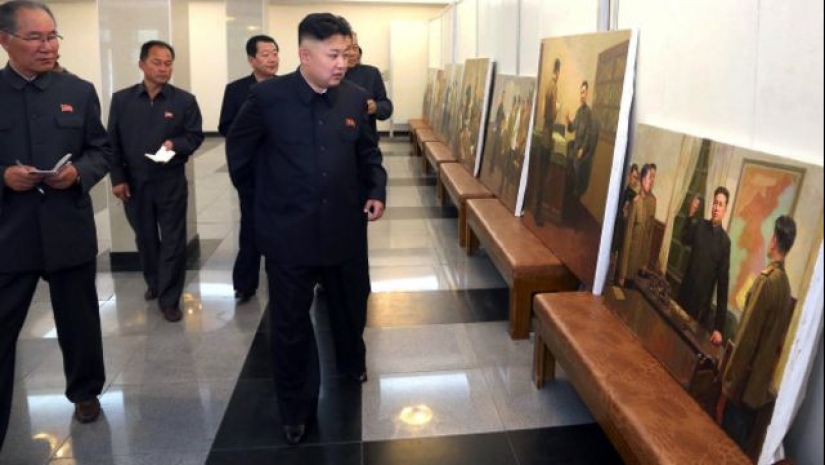
But the ban on activities does not prevent Mansudae from conducting its profitable business. Now the studio operates through shell companies and its name does not appear anywhere. Illegally manufactured and mounted leaders regularly appear in different parts of the world, and impoverished African countries, as before, remain regular clients of masters of monumental art from the DPRK.
Recent articles

Most of us think that the color of the eggshell does not play any role and it is possible not to pay attention. But it's not and ...

The more we rely on technology, the more potential power hackers gain over us. It doesn't matter if their goal is to help or cause ...

Creating a good portrait is one of the most difficult tasks for any photographer. In order to make a really natural and memorable ...